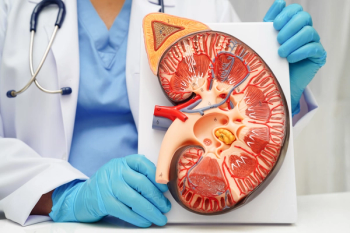
Ocular Melanoma Test Developed to Determine Mortality Risk
Researchers at Washington University in St. Louis have developed a genetic test to help predict survival odds for patients with ocular melanoma.
Researchers at Washington University in St. Louis have developed a genetic test to help predict survival odds for patients with ocular melanoma.
For decades, doctors have predicted a patient’s probability of surviving cancer by evaluating their tumor’s size and appearance. Now, patients with ocular melanoma have a new option: a genetic test that predicts survival odds fairly accurately. The test was developed by a team of researchers led by J. William Harbour, MD, of Washington University in St. Louis, and a
Ocular melanoma is rare; roughly 2,000 people per year are diagnosed with the condition, accounting for 5% of all melanoma patients. It is, however, the most common primary cancer of the eye. Ocular melanoma is usually treated with radiation, although surgeons generally remove the entire eye if the tumor is large. Recent treatment advances have been able to spare vision and eye tissue but have not improved survival. Ocular melanoma can metastasize to and grow in the liver; once it migrates, the cancer cannot be cured or decelerated.
The gene expression profiling (GEP) test identifies 2 gene patterns—molecular subgroups that can be prognostic. Patients with the pattern designated as Class 1 are usually cured when the tumor is removed, while 70% to 80% of patients with the pattern designated as Class 2 die within 5 years of tumor removal.
Prior to developing the test, Dr. Harbour studied tumor fragments to decipher their molecular characterization. He then worked with specialists to identify genetic differences between tumors that were fatal and those that were not. The researchers observed differences in about 1000 genes between the 2 classes of tumor. Of note, Class 2 tumors possess a specific mutation in the BAP1 tumor suppressor gene located on chromosome 3, which is often lost due to ocular melanoma. The researchers eventually identified 12 genes that could be used to reliably determine a patient’s chances of survival. The tests include an additional 3 genes, which serve as a control.
In the study, which included 459 patients, the test successfully classified participants’ tumors as Class 1 or Class 2 more than 97% of the time (in 446 of 459 cases). The researchers were able to predict that approximately half of patients with Class 2 tumors would experience metastases within 3 years. For these patients, referral to a clinical trial that is testing targeted therapies may be the best treatment alternative.
Dr. Harbour believes it may be possible to slow cancer progress in Class 2 patients by obstructing the BAP 1 gene. He is conducting a drug trial with experimental histone deacetylase inhibitors.
Increasingly, researchers are developing similar tests for other cancers. A GEP test for leukemia is already in use.
Ms. Wick is a visiting professor at the University of Connecticut School of Pharmacy and a freelance writer from Virginia.
Newsletter
Stay informed on drug updates, treatment guidelines, and pharmacy practice trends—subscribe to Pharmacy Times for weekly clinical insights.
















































































































































































































